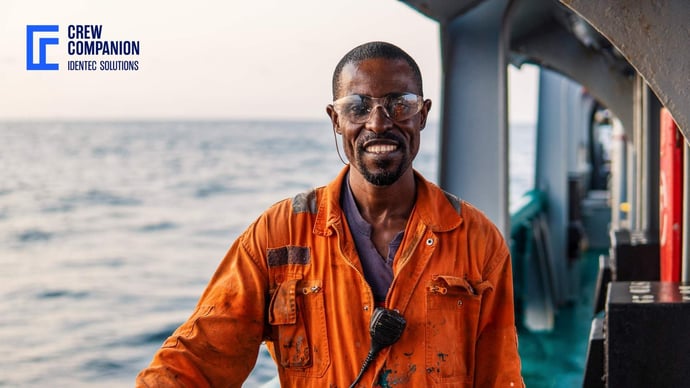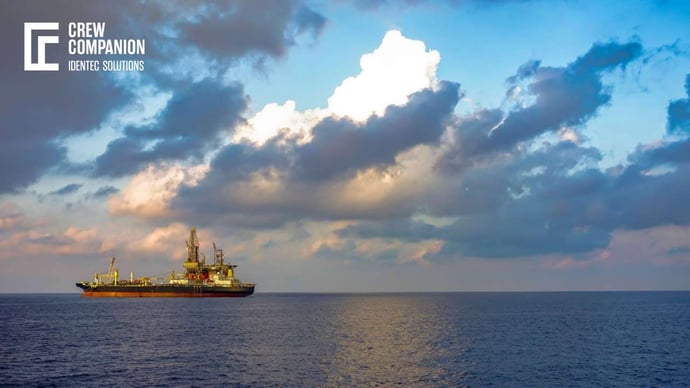How Oil rig safety supports production targets
| Written by Mark Buzinkay
Achieving production targets will be only possible when achieving safety targets. Typically, such safety targets include reducing the number of accidents and injuries, improving emergency response times, increasing employee training on safety procedures, and implementing new technologies to improve safety.
Achieving these safety targets is essential to maintaining a safe workplace and preventing production disruptions.
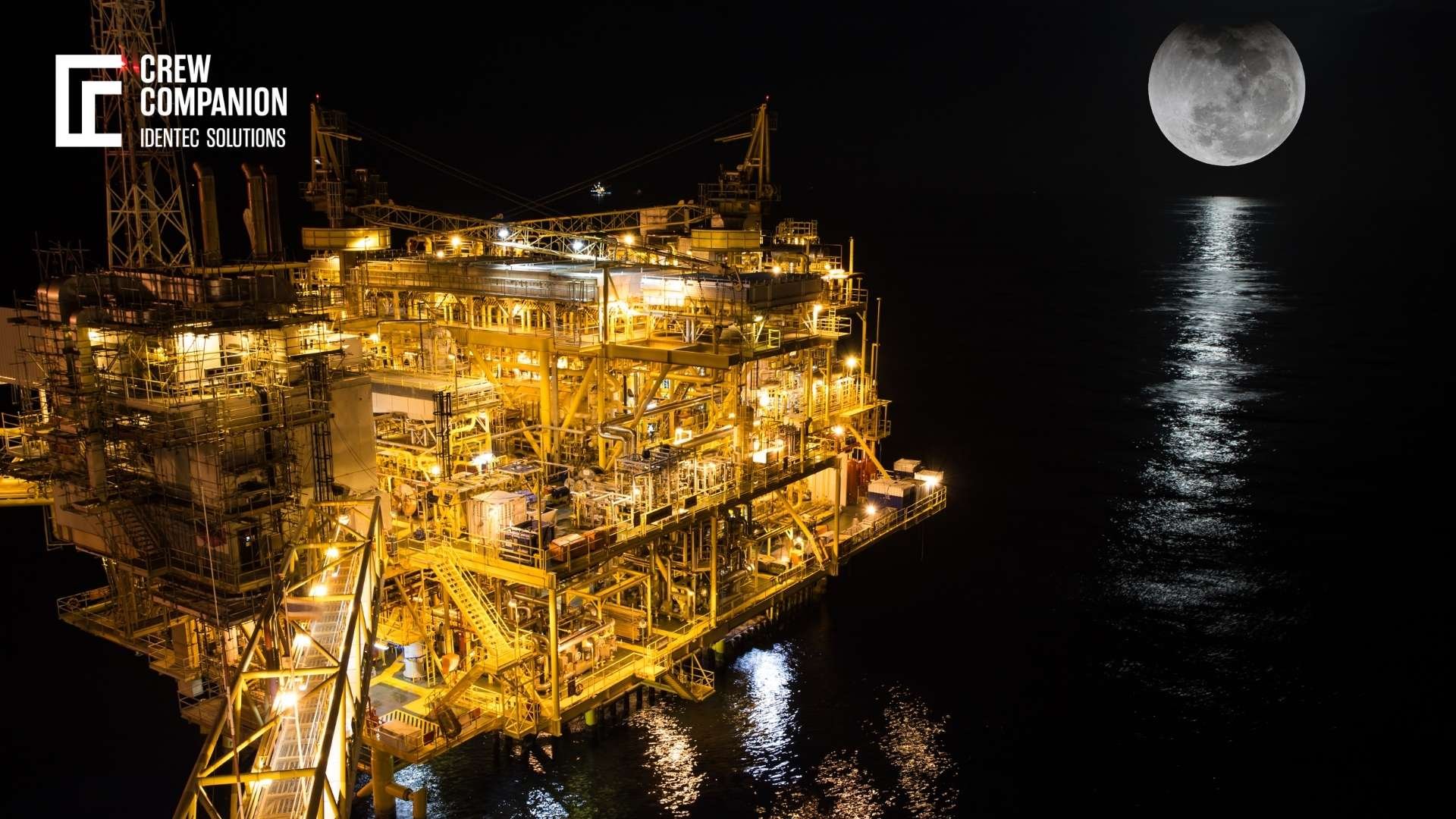
No video selected
Select a video type in the sidebar.
Profitable offshore installations
Offshore oil and gas operations are vital to the global economy, providing energy that powers industries and countries worldwide. Therefore, safe and efficient oil and gas production is critical to meeting the world's energy needs.
Despite the challenges and costs associated with offshore drilling, companies continue to invest in this critical activity because of the significant rewards that can be reaped.
Oil producers' business models generally depend on the global oil price and production costs. Upstream companies sell the crude oil they produce, but their earnings are greatly affected by the movement of oil and gas prices. An oil producer's revenue boils down to the difference between the cost of production and the price at which they can sell their product.
On the other side, offshore drilling is a complex and expensive undertaking. In general, the daily operating costs of an offshore rig can range from $600,000 to $800,000 per day. The high costs are due to several factors, including the remote location of many offshore oil and gas reserves, the hostile environment in which offshore operations must be conducted, and the specialized equipment and personnel required. Nevertheless, constant production 24/7 and low production costs are the secrets of a profitable business.
Given the high costs of offshore operations, oil and gas companies are always looking for ways to reduce production costs. One way to do this is by improving safety. However, every incident offshore will affect operations. It will disrupt running operations, cause lower production, and, in the worst case, create additional costs (e.g. damage repairs, higher insurance premiums, and compensations), leading to lower operational profits.
Continue reading here If you are more interested in oil rig security.
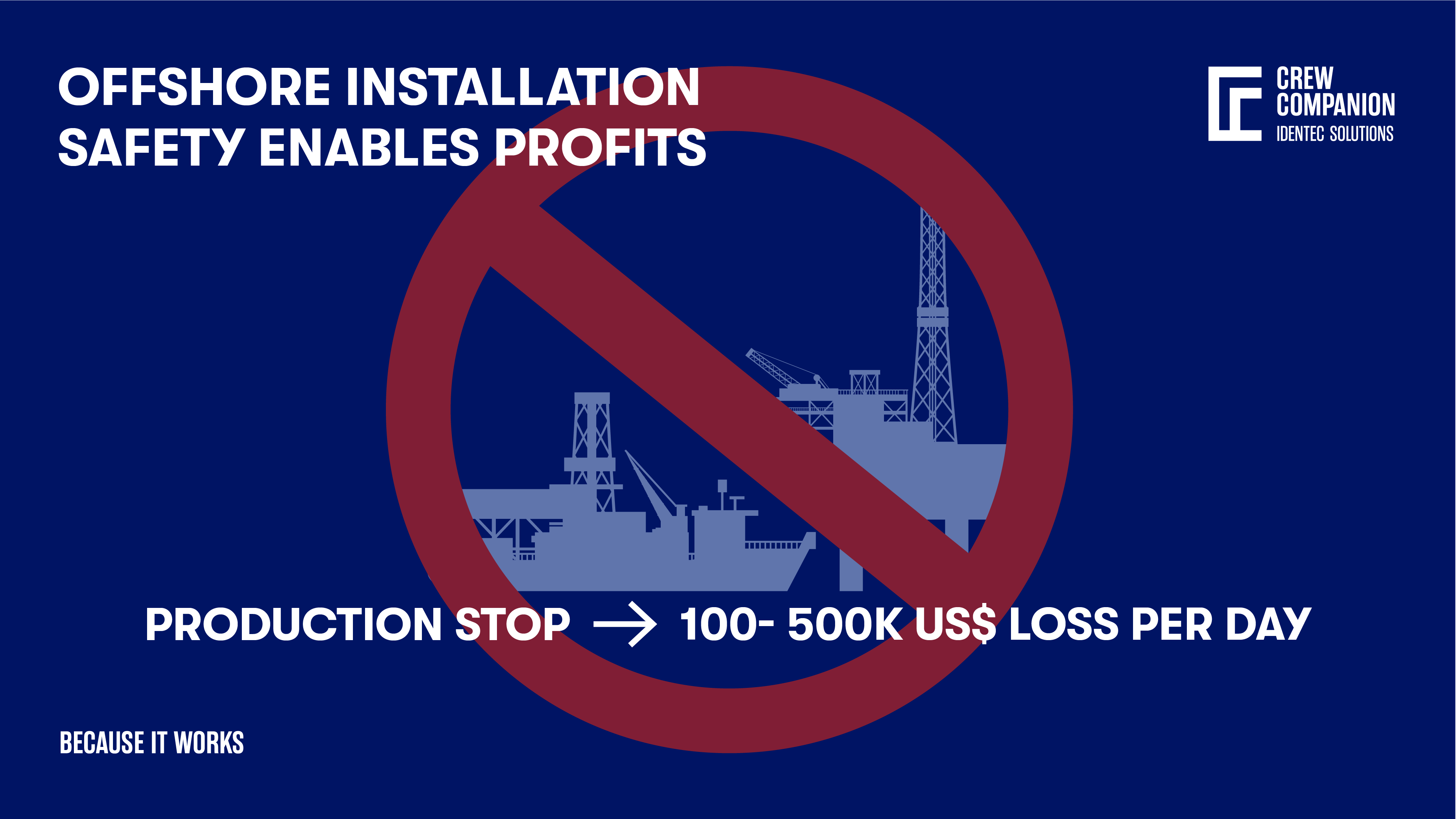
Oil rig safety: Avoiding costs resulting from incidents
Offshore drilling operations are expensive, and companies must carefully manage costs to be profitable. At the same time, offshore oil and gas operations are inherently risky. Workers are exposed to various hazards, including fire, explosions, chemical spills, and fumes. In addition, they work in a remote and often isolated environment, which can make it difficult to get help in the event of an emergency.
The costs of accidents and incidents at offshore oil and gas installations can be high. They include direct costs such as property damage and clean-up costs and indirect costs such as lost production and regulatory penalties. In addition, accidents and incidents can negatively impact public opinion, reducing investment and increasing scrutiny from regulators. Here is a list of the main cost factors in case of an incident:
- Property damage: Includes risks incurred during the construction and transportation on the operating site, physical damages (due to collision, bad weather, breakdown) and removing debris/wreckage.
- Compensations to workers and their kin: Indemnifies the crew members and their families in the event of an accident causing injury or death of an employee during the performance of his duty.
- Clean-up costs: Includes costs in the event of pollution resulting in bodily injury or material damage to a third party and the costs of environmental clean-up following the pollution.
- Production stop: Depending on the offshore installation, this can amount to several 100k US$ loss per day.
- Loss of platform: A deepwater platform may cost more than 1 Billion US$ whereas smaller shallow water platforms cost a fraction of it (100 Mio US$).
- Insurance premiums: Insurance policies covering oil rigs are standard policies managed according to risk specificities. Insurers also offer tailor-made solutions. Insurance costs are up to 10 Mio US$ per year.
- Closure by authorities: When an oil rig is declared unsafe and closed, it loses its daily production until it is reopened.
The catastrophe of April 20, 2010 that destroyed the Deepwater Horizon platform is estimated at over 14 billion USD. Deepwater Horizon was a semi-submersible drilling platform. The disaster caused the release of 4.9 million barrels of crude oil (approximately 678 000 t), and the coastline area of Louisiana, Mississippi, Alabama and Florida was polluted. The human toll is 11 dead and 17 injured.
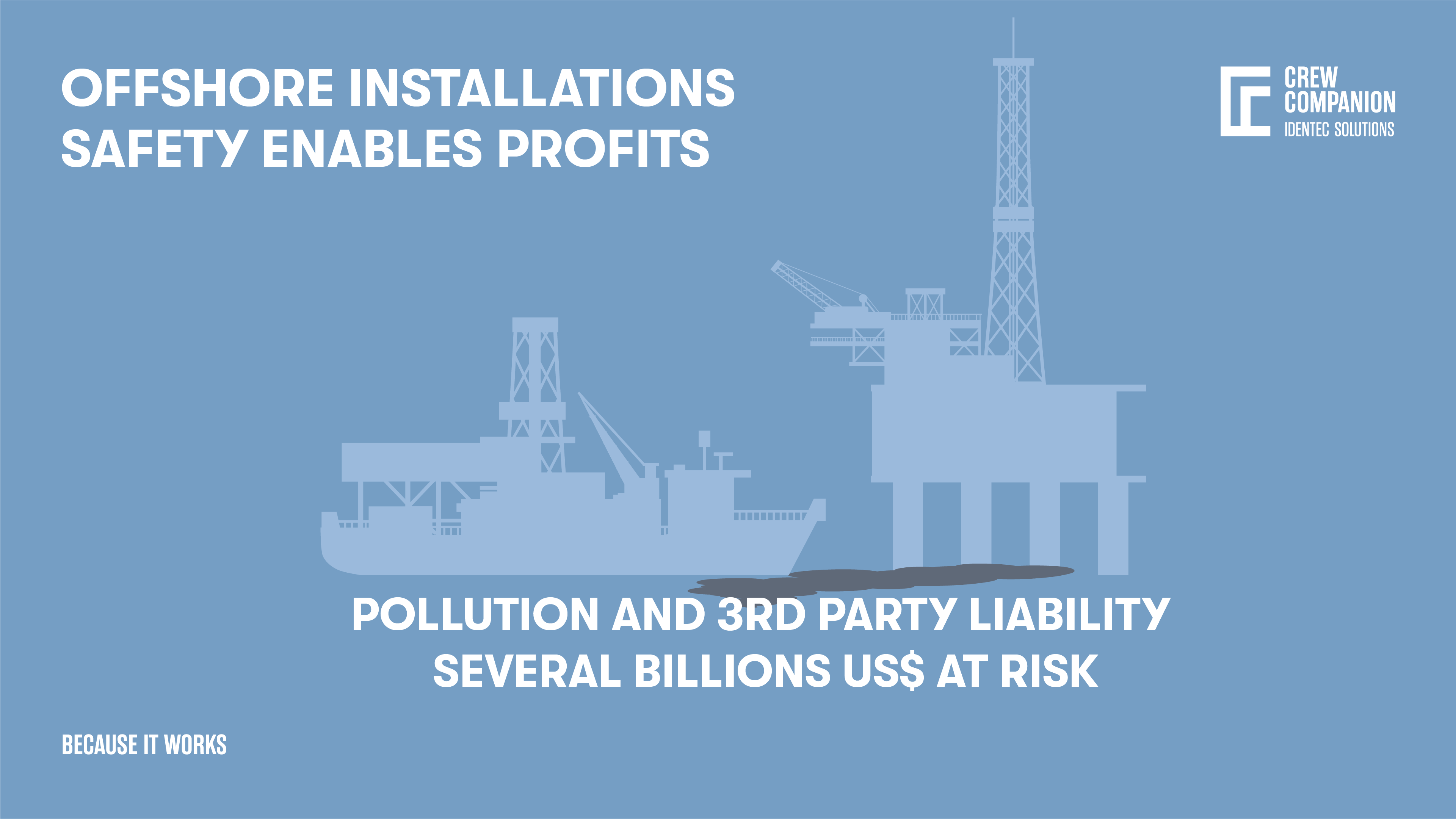
Oil rig safety: Measures to avoid incidents
Some standard safety targets for oil and gas companies include:
- Reducing the number of accidents and injuries
- Improving emergency response times
- Increasing employee training on safety procedures
- Implementing new technologies to improve safety (see also: emergency response technologies)
Proactive safety measures can help to reduce the costs of accidents and incidents. These measures can include implementing safety management systems, using new technologies to improve monitoring and communication, and providing training for workers on how to work in an offshore environment safely.
There are three levels of safety-related aspects on offshore rigs:
- Safety culture
- Safety training
- Safety equipment
Safety training
Oil rig safety is paramount to achieving production targets. A safe work environment is vital to protecting workers and preventing accidents. Employees must be trained to recognize and correct safety hazards. They must also understand best safety practices and expectations.
Failing to follow safety protocols can lead to dangerous accidents. Injuries and even fatalities can occur if proper safety procedures are not followed. This can have a devastating impact on production targets. To avoid such disasters, all workers on oil rigs must receive comprehensive safety training. Only then can the goals of both safety and production be achieved.
Safety training is essential because many potential hazards can lead to accidents, injuries, and even death. Employees need to understand how to identify potential risks and take steps to correct them.
One of the most critical aspects of safety compliance is reporting a near-miss. A near-miss incident could have resulted in an accident, but it didn't. By reporting a near-miss, management can take steps to prevent future accidents from happening.
Technology can play a crucial role in enhancing offshore safety. For example, using remotely operated vehicles (ROVs) can help reduce workers' exposure to hazards. In addition, using real-time monitoring systems can help identify potential problems before they result in an accident or incident.
Personal protective equipment
Personal protective equipment may include gloves, safety glasses and shoes, earplugs or muffs, hard hats, respirators, coveralls, vests and full-body suits. PPE is necessary because it protects workers from serious injuries or death. In some cases, PPE can also protect workers from exposure to hazardous materials.
When selecting PPE, it is vital to consider the type of hazard workers will face. For example, if workers are exposed to chemicals, they must wear PPE designed to protect them from chemical exposure. In addition, PPE must be comfortable to wear and easy to use to ensure that workers will wear it.
Some common types of PPE include gloves, safety glasses, hard hats, and respirators. Gloves protect workers' hands from injuries and can also protect them from exposure to hazardous materials. Safety glasses protect workers' eyes from injuries and can also help to keep dust and other particles out of the eyes. Hard hats protect workers' heads from injuries and can also help to deflect falling objects. Finally, respirators protect workers' lungs from exposure to hazardous materials and can also help to filter out dust and other particles.
PPE is an integral part of any safety program. By selecting the proper PPE for the job, employers can help to reduce the risks.
PPE, safety training and safety rules can be understood as a defensive line: Your goal is to protect. On the other hand, a safety culture requires a proactive attitude.
Safety culture
Safety culture is the product of individual and group values, attitudes, perceptions, competencies, and patterns of behaviour that determine an organization's commitment to and style and proficiency in health and safety management.
A strong safety culture is vital to preventing workplace accidents and injuries. It starts with upper management setting the tone and leading by example. Employees need to feel they can speak up about safety concerns without fear of retribution. They also need to know that management is committed to protecting their health and safety.
Safety culture should be reflected in all aspects of the organization, from how work is done on the front line to how decisions are made at the top. It should be an integral part of the organization's strategy, not something that is tacked on as an afterthought.
A strong safety culture requires ongoing communication and training. Employees need to be kept up-to-date on changes in procedures and policies and know how to report unsafe conditions or behaviours.
Learn more about HSE Offshore!
Takeaway
Offshore oil and gas production can be a very profitable venture. However, it is vital to avoid the costs that may result from the incidents. Some measures can be taken to prevent incidents, including technology, safety training, and personal protective equipment. By accepting these measures, employers can help to create a safe work environment and avoid costly accidents and injuries (think of emergency mustering). Ensure safety measures are implemented in your offshore oil and gas production venture to avoid expensive accidents!
Dive into our extended overview of posts and whitepapers regarding Personnel on board and offshore safety!
Sources:
(1) Thoralf Ulrik Qvale: Design for Safety and Productivity in Large Scale Industrial Projects. The Case of the Norwegian Offshore Oil Development. In: Reliability and Safety In Hazardous Work Systems (1994). 1st Edition, Imprint Routledge; eBook ISBN 9780203775769
Note: This article was updated on the 6th of November 2024

Author
Mark Buzinkay, Head of Marketing
Mark Buzinkay holds a PhD in Virtual Anthropology, a Master in Business Administration (Telecommunications Mgmt), a Master of Science in Information Management and a Master of Arts in History, Sociology and Philosophy. Mark spent most of his professional career developing and creating business ideas - from a marketing, organisational and process point of view. He is fascinated by the digital transformation of industries, especially manufacturing and logistics. Mark writes mainly about Industry 4.0, maritime logistics, process and change management, innovations onshore and offshore, and the digital transformation in general.

